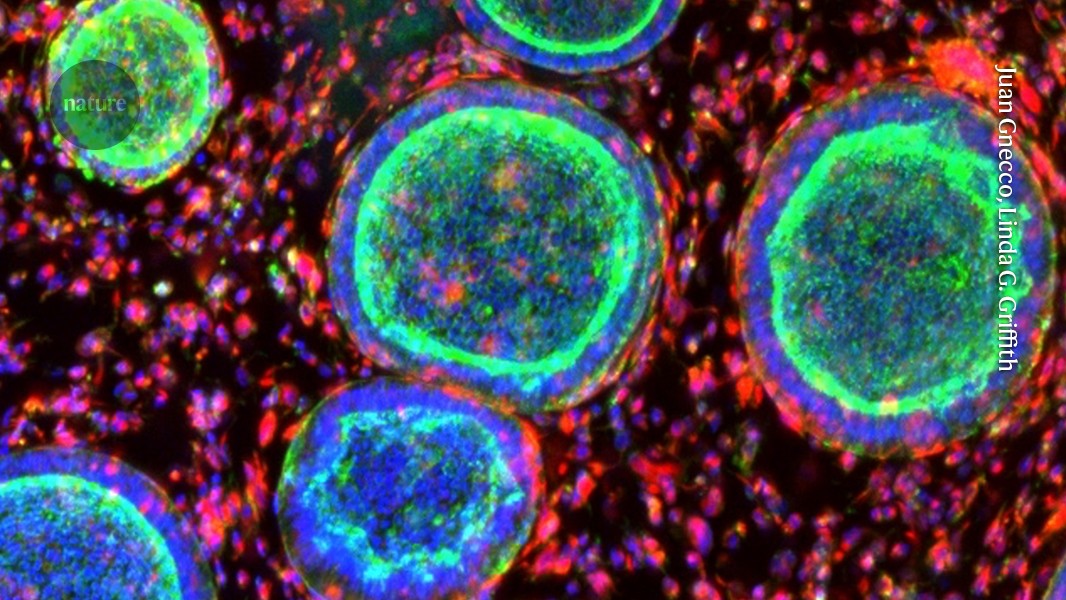
"In 2017, Ashley Moffett, a reproductive immunologist, walked to the pharmacy near her laboratory at the University of Cambridge, UK, to buy a pregnancy test. But it wasn't for Moffett. Her postdoc, Margherita Turco, had created what she thought might be the first cluster of cells capable of mimicking the tissue of the placenta - a placental organoid. But she needed a way to be sure."
"Scientists make organoids such as this by coaxing stem cells to grow in a jelly-like substance and to self-assemble into clumps of tissue. The typically hollow or solid balls of cells don't look anything like real organs. But they do take on key aspects of the organ that they're meant to represent - liver, brain, lung or stomach, for instance."
A placental organoid secreted HCG, confirming functional mimicry of placental tissue. Organoids are produced by coaxing stem cells to grow in a jelly-like substance and to self-assemble into clumps that capture key organ features despite not resembling organ shape. Mini-organs behave like tissue: cells divide, differentiate, communicate, respond to their environment and die. Containing human cells, organoids can better represent human biology than many animal models. Organoids have been used to study early brain development and to test cancer therapies, and their use has expanded rapidly over the past decade.
Read at Nature
Unable to calculate read time
Collection
[
|
...
]